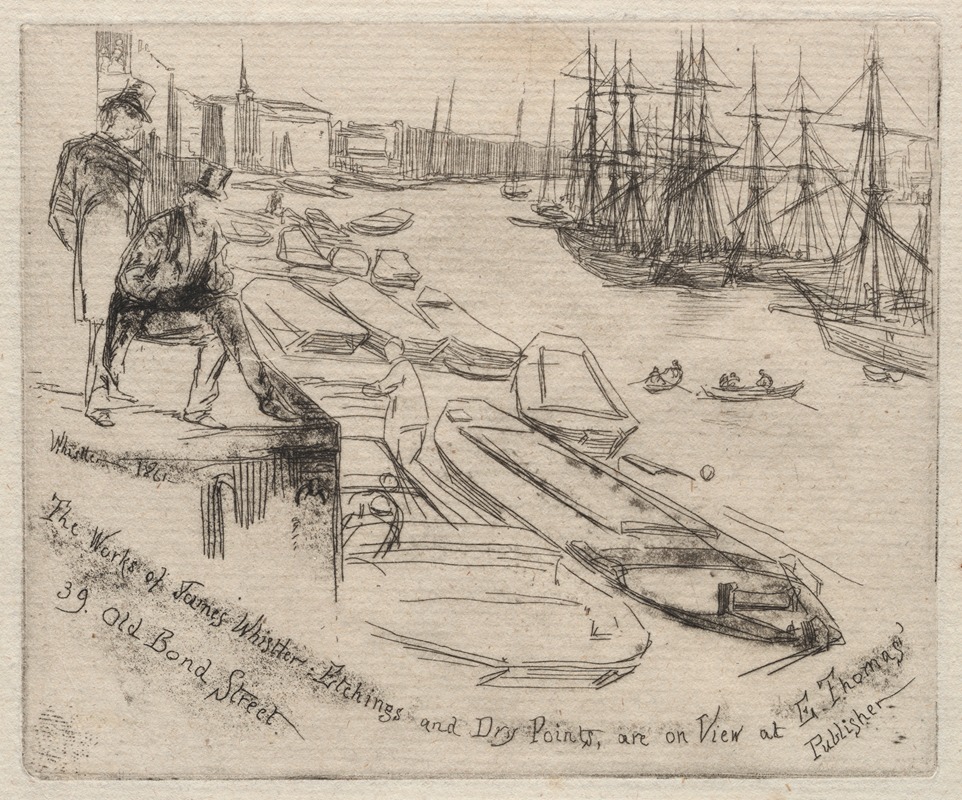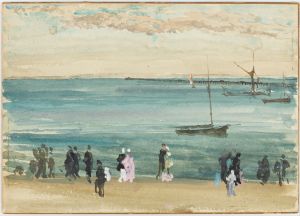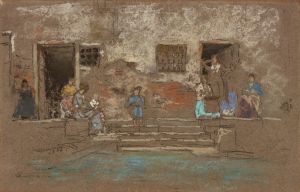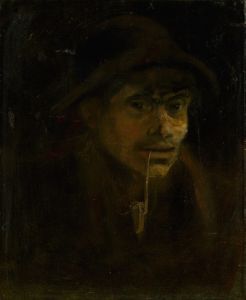
The Little Pool
A hand-painted replica of James Abbott McNeill Whistler’s masterpiece The Little Pool, meticulously crafted by professional artists to capture the true essence of the original. Each piece is created with museum-quality canvas and rare mineral pigments, carefully painted by experienced artists with delicate brushstrokes and rich, layered colors to perfectly recreate the texture of the original artwork. Unlike machine-printed reproductions, this hand-painted version brings the painting to life, infused with the artist’s emotions and skill in every stroke. Whether for personal collection or home decoration, it instantly elevates the artistic atmosphere of any space.
James Abbott McNeill Whistler was an American artist known for his paintings and etchings, and he played a significant role in the aesthetic movement. One of his works, "The Little Pool," is an etching that exemplifies his skill in this medium. Whistler was renowned for his ability to capture subtle details and atmospheric effects, and "The Little Pool" is a testament to his mastery of these techniques.
"The Little Pool" was created during a period when Whistler was deeply engaged in the art of etching, a printmaking process that involves using acid to cut into the unprotected parts of a metal surface to create a design. This work is part of Whistler's "Thames Set," a series of etchings that depict scenes along the River Thames in London. The series was produced in the early 1870s and is considered one of Whistler's significant contributions to the etching revival of the 19th century.
In "The Little Pool," Whistler captures a tranquil scene along the river, focusing on the interplay of light and shadow on the water's surface. The etching reflects Whistler's interest in the effects of light and atmosphere, which were central themes in his work. His approach to etching was innovative for the time, as he often employed a delicate line and a keen attention to detail to convey the mood and essence of the scene.
Whistler's etchings, including "The Little Pool," were influenced by his exposure to the works of the Old Masters, as well as his contemporaries in the etching revival movement. He was particularly inspired by the works of Rembrandt and the atmospheric qualities of Japanese art, which can be seen in the composition and execution of his etchings.
"The Little Pool" and the other works in the "Thames Set" were well-received by critics and collectors, helping to establish Whistler's reputation as a leading etcher of his time. The series was published in 1871 and showcased Whistler's ability to capture the essence of urban life and the natural environment with a refined and sensitive touch.
Whistler's work in etching, including "The Little Pool," had a lasting impact on the art world, influencing future generations of artists and printmakers. His innovative techniques and dedication to capturing the subtleties of light and atmosphere continue to be celebrated in the art community.
Overall, "The Little Pool" is a fine example of Whistler's etching work, demonstrating his skillful use of the medium to convey the beauty and tranquility of a riverside scene. The piece remains an important part of Whistler's artistic legacy and a testament to his contributions to the etching revival of the 19th century.


















